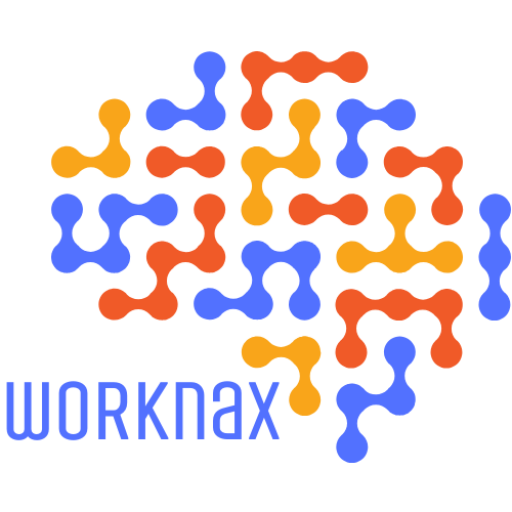Anúncios
Language learning has undergone a significant transformation in recent years, primarily due to the pivotal role that technology now plays in this field. While traditional methods such as textbooks, grammar exercises, and classroom instruction remain valuable, modern approaches are increasingly being embraced by language learners around the world. These innovative techniques are particularly geared towards enhancing speaking skills, an area where many learners seek improvement. In this context, one prominent methodology gaining traction is the use of language exchange applications, which effectively facilitate engaging conversations between native speakers and learners from diverse backgrounds.
Language exchange apps, such as Tandem, HelloTalk, and Speaky, represent a groundbreaking development in the realm of language acquisition. These platforms strategically connect individuals who are eager to learn new languages with native speakers who, conversely, are interested in acquiring the language the user is fluent in. This reciprocal arrangement creates a mutually beneficial environment for both parties, fostering a practical and enriching learning atmosphere. Users are encouraged to engage in casual conversations, which are essential for improving their speaking fluency and building confidence in their language abilities.
One of the most significant advantages of using a language exchange app lies in the opportunity for real-world interaction that it provides. Unlike the more traditional classroom settings, where learners often practice in isolation and with limited exposure to authentic conversations, these innovative apps allow users to engage in genuine dialogue. They can converse in real time, using the target language as it is naturally spoken, thereby gaining exposure to conversational pace and the nuanced use of idiomatic expressions. This authentic interaction significantly enhances the learning experience and accelerates language acquisition.
Moreover, language exchange applications are designed to accommodate learners at various proficiency levels, making them highly versatile and accessible. Absolute beginners can begin by practicing simple phrases and everyday vocabulary, while more advanced learners can immerse themselves in complex discussions that challenge and refine their linguistic abilities. This flexibility empowers users to learn and progress at their own pace, a substantial advantage when compared to more rigid, structured learning environments. Such adaptability is crucial for maintaining motivation and ensuring sustained interest in language learning as learners advance through their linguistic journey.
Engaging with native speakers through these interactions also offers learners a unique chance to correct their pronunciation and language usage in a non-judgmental environment. The immediate feedback received from native speakers is invaluable, as it solidifies correct forms and usage in learners’ minds while simultaneously introducing them to local dialects, colloquial terms, and slang. These authentic interactions contribute significantly to a more natural and immersive language acquisition process, making speaking practice both effective and enjoyable, as learners gain insights into how the language is truly used in everyday situations.
To optimize the effectiveness of language exchange platforms, it is beneficial for learners to set specific goals for their speaking sessions. For instance, individuals might focus on discussing a particular subject matter or set of vocabulary words in each interaction. Establishing clear objectives not only helps learners stay organized but also ensures that their conversations are productive and meaningful. By discussing relevant topics that interest them, learners can contribute more actively, further reinforcing the concepts they have recently acquired.
However, effective language practice involves more than just speaking; it also encompasses listening skills. Engaging in conversations with native speakers exposes learners to various accents, speech patterns, and linguistic nuances, thereby enhancing their overall comprehension. This dual approach—both speaking and listening—is crucial, as it ensures that learners can engage in reciprocal communication and understand responses spontaneously and naturally, facilitating more fluid and engaging dialogues.
Consistency stands as another essential element in the language learning process, particularly when utilizing exchange apps. Regular practice is fundamental for reinforcing language retention and accelerating the learning trajectory. Setting aside dedicated time for daily or weekly conversations with language partners can lead to significant improvements over time. Moreover, establishing consistent communication with a speaking partner aids in tracking progress, enabling learners to remain accountable and motivated as they strive to achieve their language-learning goals.
To further enhance their speaking practice, learners can complement their conversations with a variety of additional resources that align with their language journey. For instance, supplementing dialogue with related podcasts or YouTube videos can provide valuable context and expand vocabulary. These supplementary media inputs allow for greater familiarity with various speech styles and cultural nuances, reinforcing the vocabulary and expressions practiced during the exchanges while exposing learners to different aspects of the language.
An emerging trend within language practice is the integration of gamification, which adds a layer of interactivity and motivation to the learning experience. Many language exchange applications now incorporate game-like elements—such as points, levels, or rewards for engaging in conversations—to encourage users to participate regularly. This playful approach to language learning can be particularly effective for younger learners or those who may initially feel apprehensive about initiating conversations in a new language. By making learning fun and enjoyable, the pressure often associated with language acquisition can be alleviated.
Furthermore, personalizing language exchange sessions can significantly improve the overall experience, making it more engaging and enjoyable for learners. Individuals should feel encouraged to share their interests and select topics that resonate with them during conversations. By choosing areas of discussion that are exciting and meaningful, learners can cultivate a more organic and enjoyable interaction, which helps to deepen their involvement in speaking practice. Sharing personal enthusiasm encourages enthusiasm in others, transforming the learning experience into a delightful dialogue rather than a daunting task.
In addition to leveraging language exchange apps, learners might explore joining local language exchange meetups or groups. Physical gatherings provide similar opportunities for conversational practice while facilitating immersive learning experiences. Engaging in face-to-face communication can specifically help individuals overcome feelings of shyness or anxiety associated with speaking in a foreign language. The social aspect of these meetups can enhance motivation and inspire a commitment to the language-learning process, as learners create connections with like-minded individuals.
Moreover, recent advancements in virtual reality technology offer exciting new avenues for language practice. Platforms such as VRChat allow users to immerse themselves in virtual environments where they can practice speaking in an interactive and engaging manner. This innovative approach to learning can feel far more immersive than traditional methods, making the practice not only enjoyable but also instrumental in building users’ confidence in their speaking abilities.
Recognizing that mistakes are an inherent aspect of the language acquisition process is crucial for learners. Language learning unfolds through a cycle of trial and error, and it is essential for individuals to embrace the reality that making mistakes is completely normal. Engaging in conversations with native speakers provides valuable opportunities to build resilience and foster a positive mindset when confronted with errors. Acknowledging and learning from these missteps ultimately leads to substantial long-term improvements in speaking skills and communication proficiency.
By integrating various resources and approaches into their language-learning journey, learners can significantly enhance their speaking abilities. Each method offers distinct advantages, and by blending these strategies, individuals can cultivate a holistic and comprehensive learning experience. For instance, pairing language exchange with structured study sessions or confidence-building exercises can yield lasting results, enabling learners to develop a robust set of language skills that will serve them well as they navigate the intricacies of their target language.
Peer feedback can also play a significant role in alleviating anxiety related to speaking and can be instrumental in fostering a supportive learning environment. Participating in discussions where learners provide each other with constructive feedback encourages collaboration and solidarity within the community. This aspect not only strengthens their language skills but helps cultivate a sense of belonging among participants—which is essential for maintaining enthusiasm and motivation throughout the language-learning journey.
In addition, recent digital advancements like artificial intelligence (AI) are transforming the landscape of language practice. Leveraging AI language chatbots can provide immediate, patient, and non-judgmental responses to learners, simulating real-life conversations without the pressure of social anxiety. Utilizing these chatbots allows individuals to refine their speaking abilities in a risk-free environment before they engage with human interlocutors, bolstering their confidence and preparedness for real-world interactions.
In summary, language exchange apps serve as a remarkable gateway to authentic and meaningful conversations that can significantly bolster speaking skills. They provide unparalleled flexibility, opportunities for real-world interaction, and avenues for immediate feedback. By leveraging technology strategically, setting clear and achievable goals, and engaging consistently with native speakers, learners can transform their language acquisition experiences. Combining modern techniques with traditional learning tools fosters a well-rounded approach that prepares individuals to navigate the complexities of the linguistic world with confidence, ultimately leading to greater success in their language-learning endeavors.



